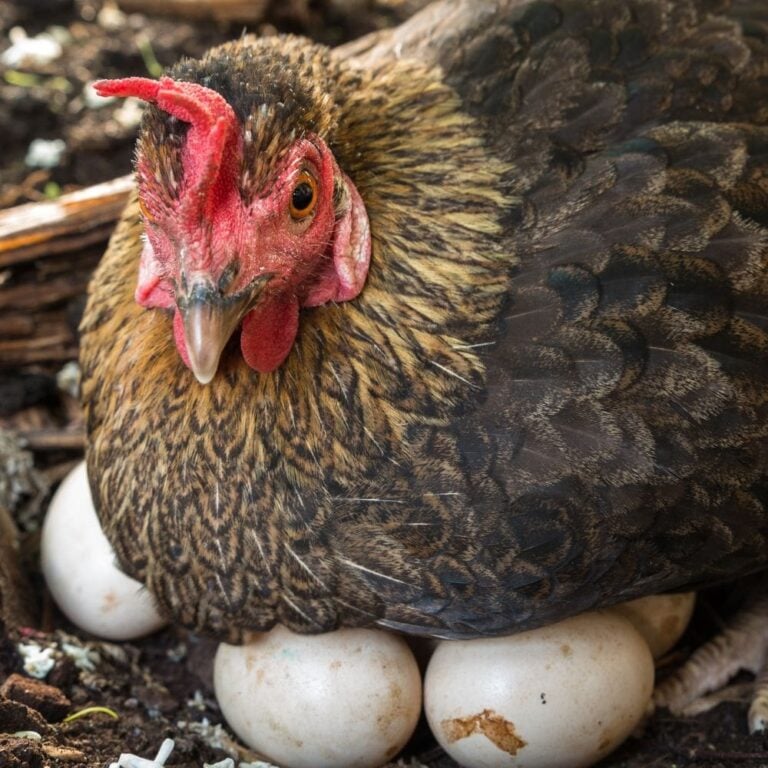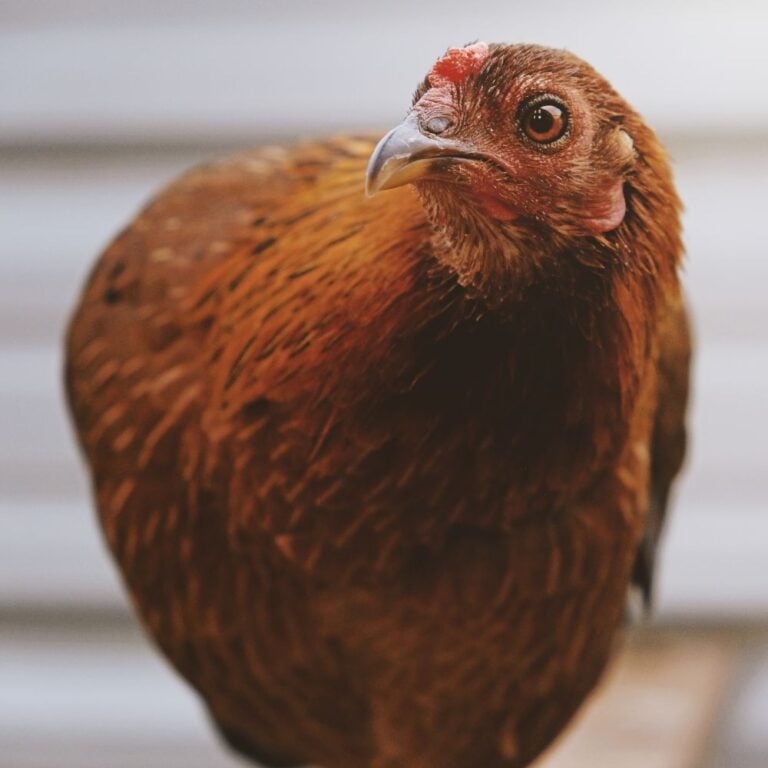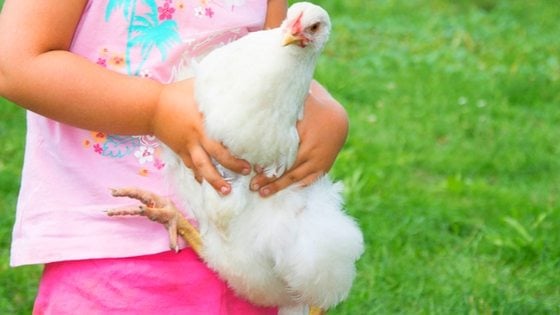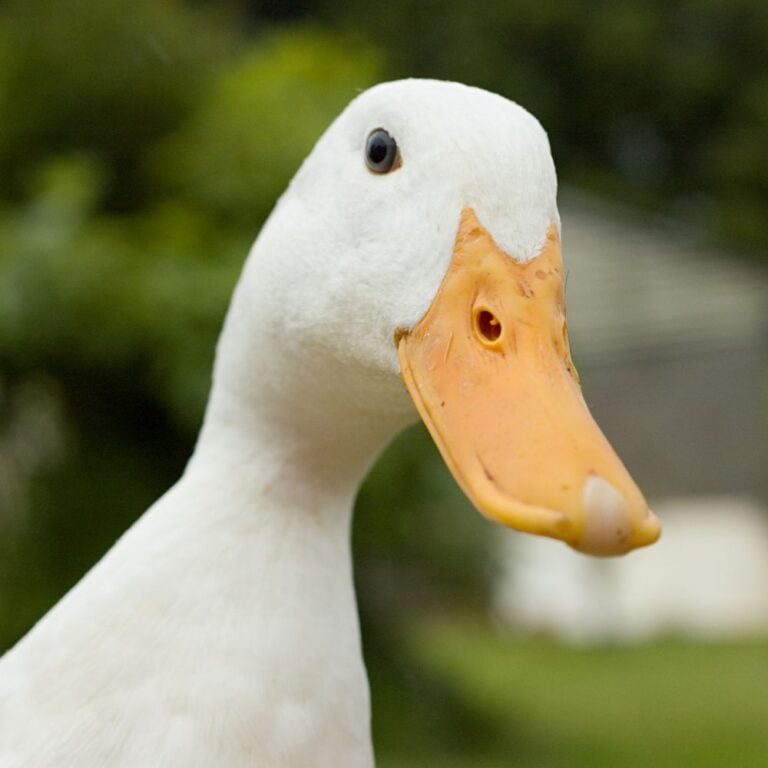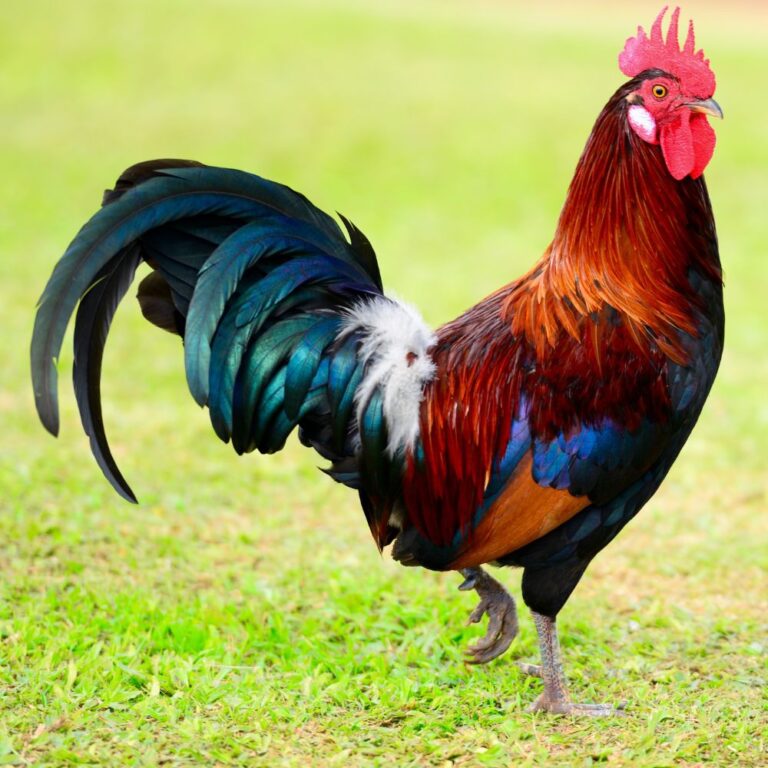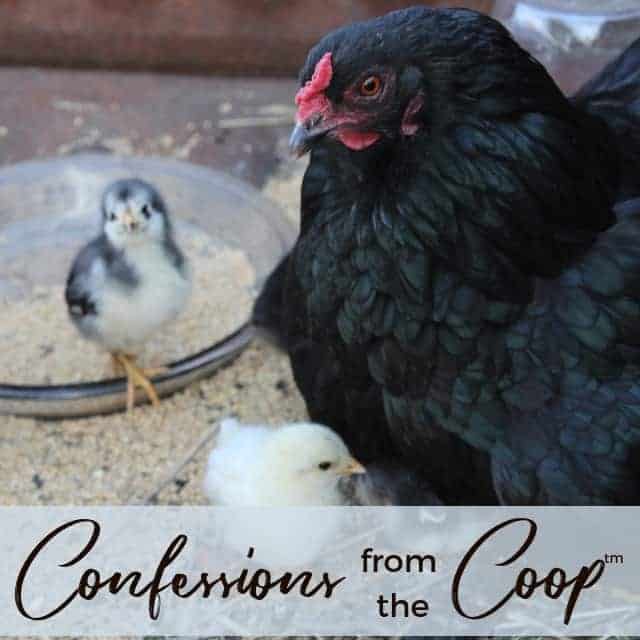If you are looking for a friendly duck that is super-sized, I’ve got your match! Ducks can be great companions and provide lots of family fun if you get the right breed. Let’s get our ducks in a row as I quack all about Rouen ducks.
If you’ve never owned a duck, or at least this particular breed, then you need to know all the pertinent duck facts to help you make the right decision.
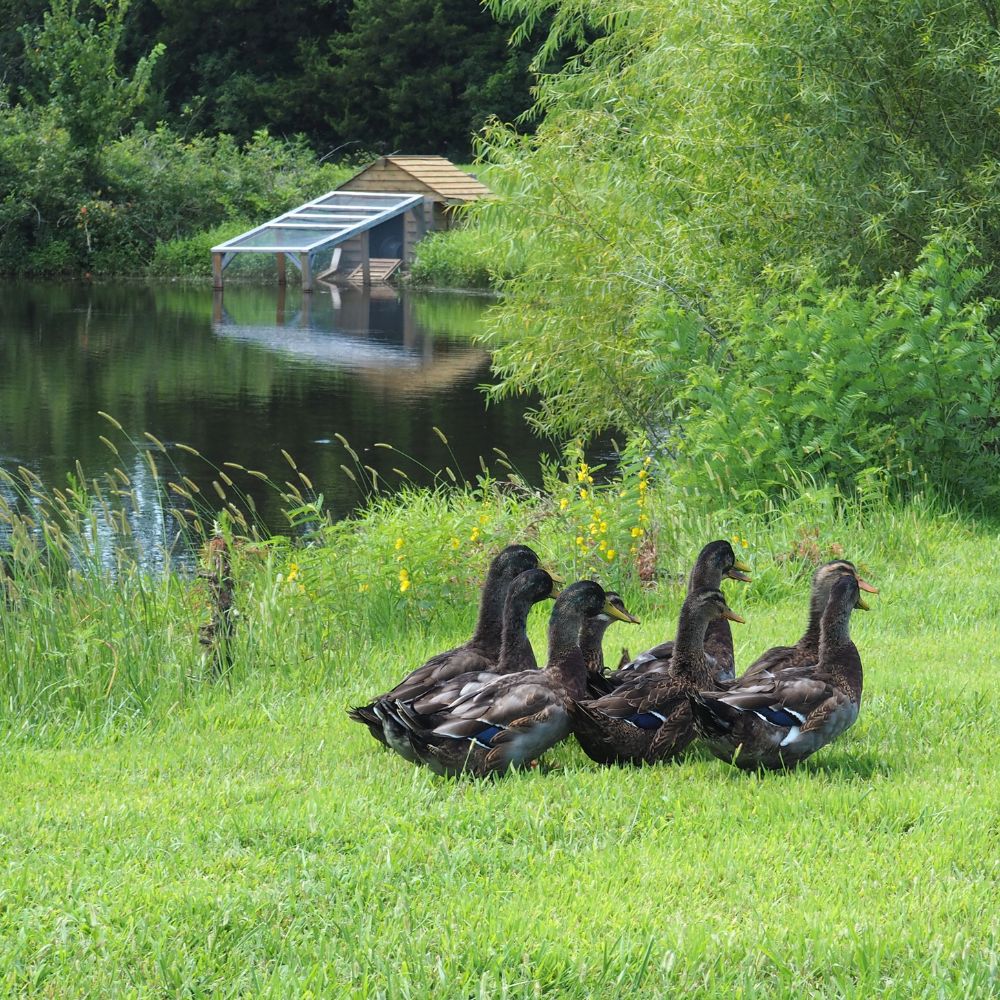
Let’s start with a fun fact. The Rouen duck breed is second on several “largest ducks in the world” lists, right behind the Muscovy duck breed. Pretty cool, especially if you are a Rouen duck.
Not all lists have them as second, but they are pretty much somewhere on every largest duck breed list. Check out this video on another kind of large duck…it’s pretty clever (you don’t want to miss it 😉).
Rouen’s have also been labeled as the second most popular breed in North America by some hatcheries. I’d say this breed is worth considering just based on that.
Table of Contents (Quickly Jump To Information)
Rouen Duck History Snapshot
- The first Rouens originated in France but became more popular once they arrived in England
- It started out with a sleek body but once in England, breeders doubled their size through selective breeding
- Names prior to the final name were Rhone, Rohan, and Roan
- D. W. Lincoln of Worcester brought Rouens to the United States in 1850
- The American Poultry Association’s Standard of Perfection accepted the breed in 1874
- They started as meat ducks and morphed into general-purpose ducks and show birds
Rouen or Mallard?
When I first came upon the Rouen duck breed I thought they were Mallard ducks. It took some convincing to make me understand otherwise. They look almost identical, but there are ways to tell them apart.
The best way to tell a Rouen from a Mallard is simply by size. Rouen ducks are at least double, and often triple, the size of Mallard ducks.
Another way to tell the difference between them is their shape which gives Rouens a longer-looking neck. Rouens are much more docile and approachable than Mallards (sorry, Mallards…the truth hurts). Female Rouens are usually a much darker brown than female Mallards and have noticeable penciling patterns as well.
Also, Mallard ducks fly quite well and Rouen ducks do not (because of their large size).
Of course, those are tips for adult ducks. If you are trying to tell if a duckling is a Rouen, you can sometimes (but not always) tell by a second stripe across the face just below the eye. Mallard ducklings only have one stripe.
Rouen Ducks Appearance
There are two kinds of Rouen ducks, standard (weight up to 11 lbs) and production (weight up to 8 lbs). We will be focusing on the standard edition in this post.
If you are familiar with what a Mallard duck looks like, then you pretty much know what a Rouen duck looks like…only much larger. But, let’s pretend you don’t know a thing about ducks (and maybe you don’t) and you need a description.
Rouen Duck Hens
Females are shades of brown (often referred to as mahogany, which sounds much fancier than just a plain old brown color pattern). They have a penciling pattern with shades of green or brown. And let us not forget the stunning bright blue streak on their wings. These ladies have orange legs and feet.
Rouen Duck Drakes
Rouen males have dark brown necks and breasts, with gray, white, and brown bodies and bright green heads. They have a white ring that adorns their neck (they look like a little white collar). These guys sport orange feet and yellow bills, and they have the same striking blue streaks on their wing feathers. A Rouen drake is a handsome fella for sure.
As with most breeds, they can have a mixture of colors for each individual duck. These descriptions are the “perfect case scenario.”
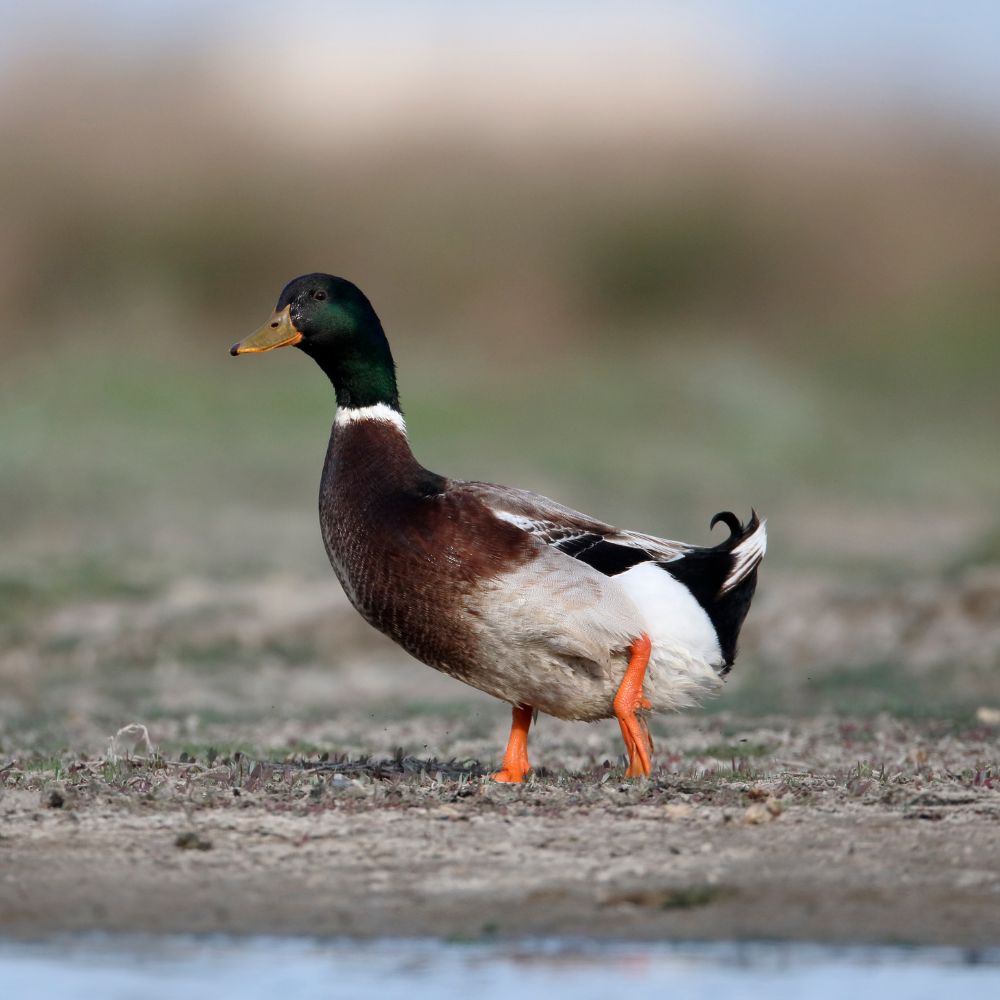
Darling Ducklings
As with many fowl, Rouen ducklings start out as yellow puff balls of joy…with some brown patches (a little twist from just yellow). They usually have two stripes on their faces, one across their eyes and a second stripe beneath their eyes.
Rouen Ducks Temperament
Rouen ducks are social butterflies. They can learn to really love their people and show it by bobbing their heads up and down and chitter-chatting when they see you coming! Almost as good as Fido when you come home from work! Especially if you make a habit of bringing nutritious treats with you! (Shhhh, don’t tell them they are nutritious).
They really, really enjoy preening each other. It’s something I find quite entertaining to watch, it’s better than any sport on TV if you ask me. Equally as entertaining is watching them forage for insects and snails (they also like small fish, crabs, and even larvae if they have access to such things).
Another adorable visual is their waddle. Their large size affects their waddle, so they are slow waddlers. It just adds to their huggability.
Meat to Eat
As you can imagine, with a duck touting its ranking in the largest duck breed category, it is a prime candidate as a roasting bird. At least in quantity. But many consider their meat to be scrumptious, even more so than most commercial meat breeds.
Apparently, they have a high-fat content, which makes them extra tender and tasty. They have much leaner meat than the Pekin duck which many people like. The downside is that the standard Rouens are not super fast-growing birds.
If you are mostly wanting meat, and at the most efficient cost ratio, then you might want to consider the production variety. Even though they don’t get as big, they grow faster.
Bonus Eggs
These big beauties, bred for meat, will also lay an egg or two. Meaning, they aren’t the best egg layers…but then again, that’s not their purpose. That is why I call them bonus eggs. You get a friendly pet or a duck that can be eaten, but they also throw a few eggs your way. Thank you, Mrs. Rouen.
If you have a real overachiever, you might get as many as 125 eggs per year. But don’t plan an egg party in advance, because some of these ladies produce a lot less than that each year. In other words, they are not prolific egg layers.
Not only that but these plus-sized ducks have a tendency to accidentally break their eggs inadvertently when they sit or step on them. Oopsy.
Just consider any eggs you get as a bonus. 🍳
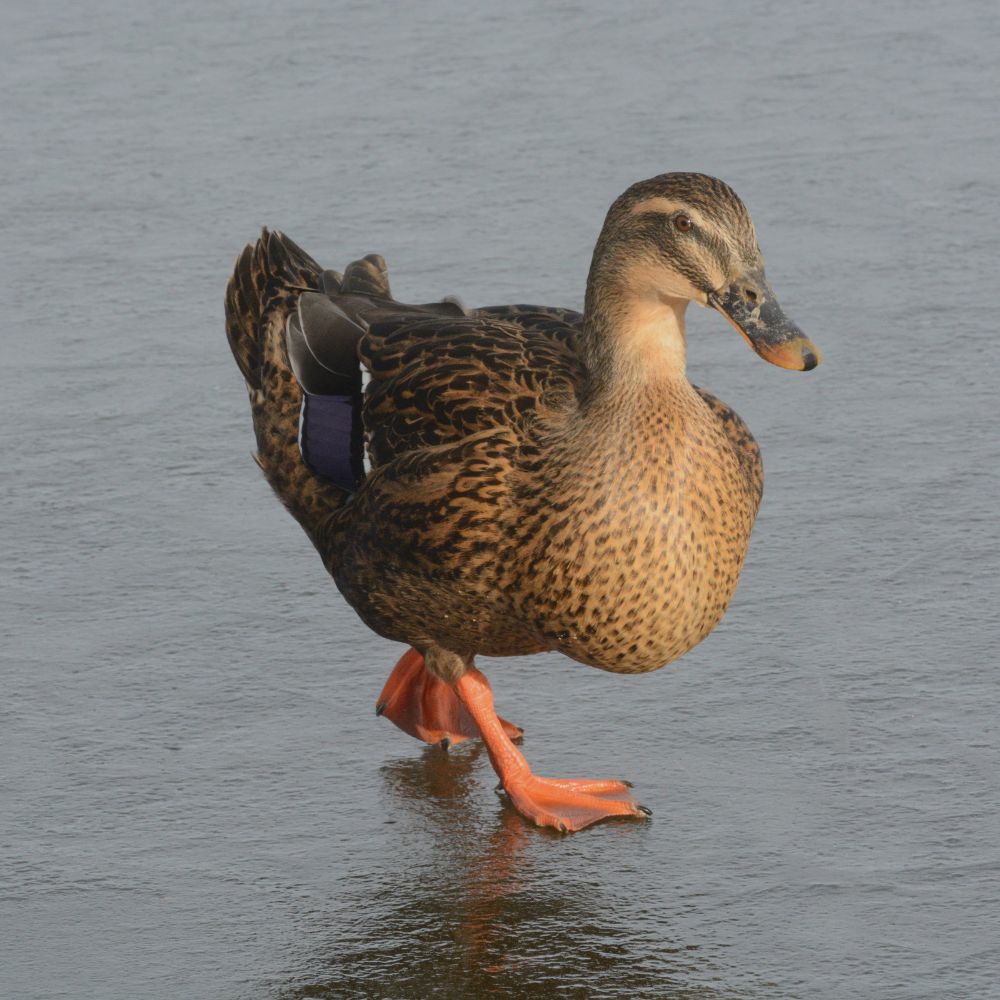
Rouen Ducks Housing
Ducks do not roost, so you don’t need to worry about roosting bars. But you do need to be sure their coop protects them from predators. They also need to be draft free in cold weather and have ventilation during hot weather.
You may also consider burying the pen fencing underground to help prevent creative predators like foxes or coyotes from making their own entryway.
Are Rouen Ducks for Me?
- If you are looking for a friendly pet duck, that is also good at insect control – you might consider a Rouen duck.
- If you are looking for a duck with meat to eat plus some bonus eggs along the way – you might consider a Rouen duck.
- If you are looking for a sweet, entertaining duck as a companion for your farm kids – you might consider a Rouen duck.
- If you want a massive duck to show off to your friends – you might want to consider a Rouen duck.
- If you want a general farm duck or a fancy show off show bird – you might consider a Rouen duck.
- If you are looking for one of the most popular duck breeds to add to your flock – you might consider a Rouen duck.
In other words, you might consider the Rouen duck breed. They have a lot going for them.
If you aren’t convinced and want to learn about some other breeds, take a look at these posts: Khaki Campbell, Call duck, and Indian Runner ducks.

A happy wife, mother, teacher, writer, hobby farmer, lover of chickens, and contributor to Pampered Chicken Mama!

